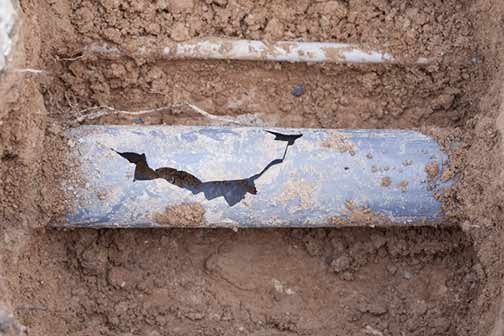
A broken line is a problem that happens often in sewer systems. However, Abilene Management team notes, this problem is difficult to spot since sewer lines are mostly underground. Even if the sewer line is badly damaged and leaks wastewater, the problem may go unnoticed for a long time.
Yet sewer line breaks are one of the most damaging problems you can have in a drainage line. The impact of this problem goes beyond its immediate effects on your home’s plumbing. Sewer line breaks can cause costly damage to your building and landscaping.
The best way to minimize the impact of a sewer line break on your family’s health and the structural integrity of your home is to find the problem on time. Why do sewer line breaks happen, and what are the early warning signs of this problem? This post will answer these questions.
Common causes of a sewer line break
- Tree root intrusion
Invasive tree roots can damage a sewer line. That is because tree roots can sense the moisture and heat from the sewer line and may eventually work their way into the pipe through a tiny crack or via a pipe connection.
- Earth movements
Soil shifts in the vicinity of a sewer line can fracture the pipe. These earth movements may be due to house settling, sinkholes, flooding, earthquakes, or even rodents burrowing under the line and weakening its support.
- Extreme temperature changes
Sub-zero temperatures can freeze the contents of a sewer line, causing them to swell and exert pressure on the sewer pipes until they burst. Extremely hot temperatures may also lead a pipe to expand until it cracks.
- Human error
A sewer line may be damaged by digging or when heavy construction vehicles or equipment are driven over the ground above the sewer line. If the soil around a sewer line is compressed, it can cause the pipe to break.
- Natural wear and tear
Sewer lines become brittle following wear and tear as they age. This fragility increases the line’s vulnerability to problems that predispose sewer pipes to leaks and fractures. That is one reason sewer line breaks are common in older sewer systems.
10 signs of a broken sewer line
- Multiple slow drains and frequent drain clogs
Your sewer line might be broken if several drains in your home are slow at the same time or if you are constantly dealing with drain clogs that refuse to go away.
- Foul odors in the home
The smell of sewage inside your home or around your yard is a sign that you have a blocked sewer line. Blockages in a sewer line are often caused by cracks and breaks in the pipes.
- Sewer backup and overflowing toilets
If wastewater can not exit a sewer line due to a break in the line, it can force its way backwards into the house. Toilet overflows and sewer backups are common signs of sewer line breaks.
- Soggy lawn and lush grass
If the broken sewer line is leaking wastewater into your lawn, parts of your lawn may become constantly soggy. The grass in that part of the home will also be greener than the rest of the lawn.
- Cracks in the home’s foundation
A cracked sewer line can discharge wastewater into the soil near your building’s foundation, basement or crawl space. This water can seep into the structures of the building, causing the foundation to show signs of failure.
- Sewage in your yard
Sewage may start to visibly pool in your yard as the sewer line discharges its contents into the nearby areas. Sometimes, you will only become aware of this problem when a sinkhole suddenly forms on your property.
- Sudden and severe pest invasion
Where there is a broken sewer line, there will be vermin like rats and roaches. These will be drawn to your property by the promise of easy food, but they can also attract dangerous animals like snakes and raccoons.
- Growth of mold and mildew
A sewer line break may encourage mold and mildew in your basement by creating the right conditions. The nutrient-dense water from a broken sewer line is a perfect food source for mold.
- Lawn indentations
Sunken areas in your yard could be the result of a broken sewer line. The water from the broken line will soak into the soil until it becomes saturated and starts to collapse.
- Cracked or uneven pavement
A broken sewer line can cause sections of your driveway to become uneven or start to sink. That happens because the soil underneath the concrete slab has lost its firmness. It allows the structures above it to shift out of place.
As previously stated, early detection of a sewer line break can help to minimize the physical and financial impact of the problem. If you are seeing more than one of these signs in your home, it may be time to get a professional plumber to perform an in-depth camera inspection of your sewer line.


